May 22 ,2025
best smart locks,shop
May 22 ,2025

Home security has evolved dramatically as burglary rates climb and break-in techniques become more sophisticated. Traditional single-point deadbolts leave significant vulnerabilities that determined intruders can exploit, creating an urgent need for more robust protection.
Multipoint smart lock represent the pinnacle of residential door security. Unlike conventional deadbolts that secure your door at just one location, multipoint systems engage multiple locking mechanisms simultaneously across your door frame. When combined with smart technology features like biometric access and smartphone control, you create a security solution that’s both virtually impenetrable and incredibly convenient.
These five carefully selected multipoint smart lock each bring unique strengths to the table. From the versatile seven-access methods of the Luston Slim to the robust weatherproofing of the Biometric Intel Lock, each system has been evaluated based on security ratings, user feedback, and real-world performance to help you make the right choice for your security needs.
Traditional door locks rely on a single deadbolt that extends into the door frame, creating just one point of resistance against forced entry. Multipoint smart lock systems engage multiple locking mechanisms when you activate the electronic controls, distributing force across several reinforced contact points.
The system includes hook bolts that curve outward to grip the door frame at multiple heights, straight bolts that provide additional rigid contact points, and a central deadbolt as the primary mechanism. Some systems include up to five separate locking points distributed along the door’s edge.
Multipoint smart lock use motors and electronic actuators to simultaneously deploy every security mechanism with a button press or biometric scan. This eliminates the physical effort required to operate multiple bolts while enabling remote access and monitoring capabilities.
A single deadbolt concentrates all stress from forced entry on one small door frame area. Multipoint systems distribute this force across multiple contact points, making breach exponentially more difficult. The multiple engagement points also maintain proper door alignment over time and provide superior weather sealing.
Modern systems incorporate fingerprint scanners, numerical keypads, smartphone apps, and voice control compatibility. The electronic brain logs every entry attempt, sends real-time alerts, and integrates with broader home automation systems for comprehensive security routines.
After extensive research and hands-on testing, these Top 5 Best Multipoint Smart Lock stand out as the best options currently available:
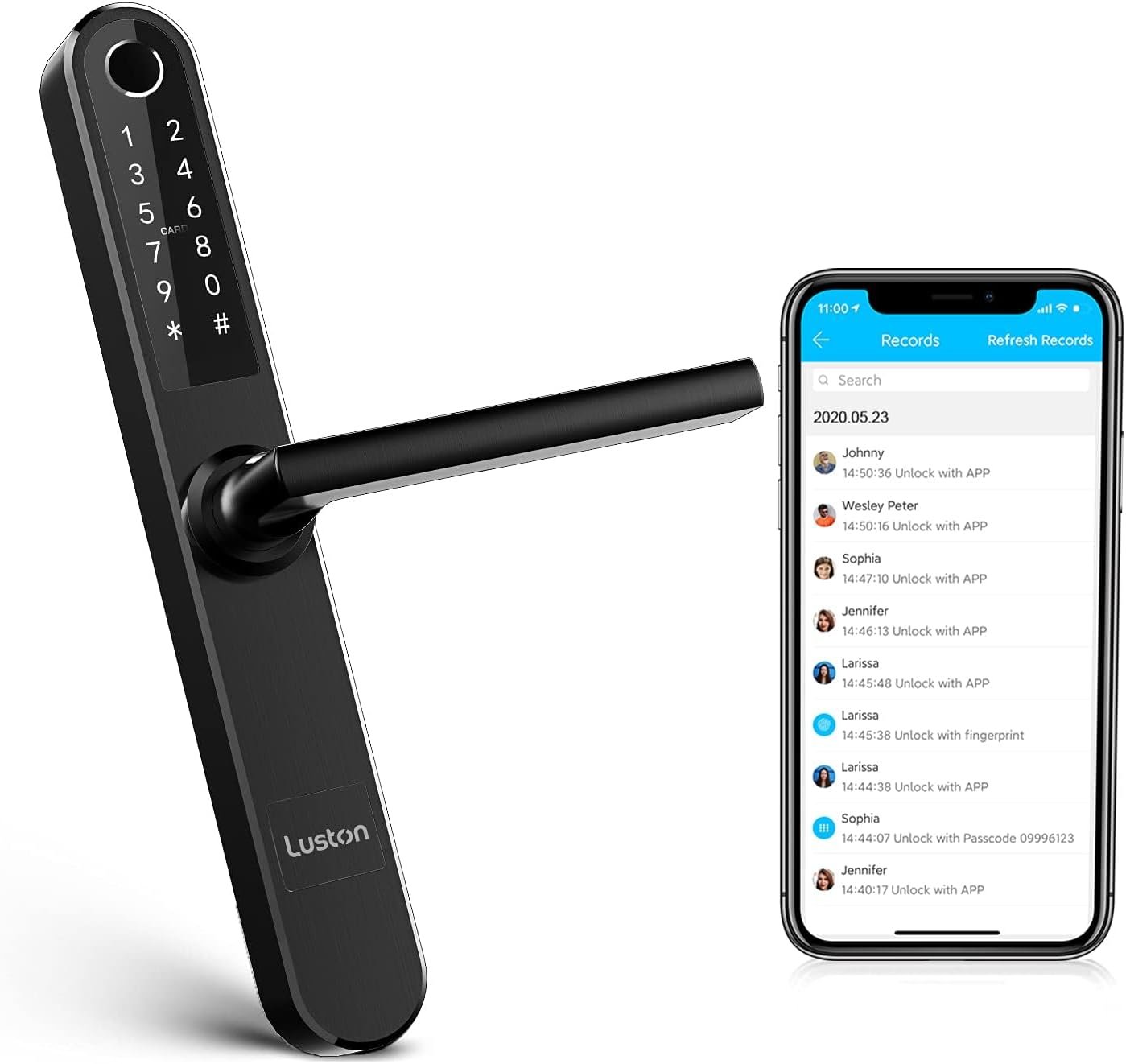
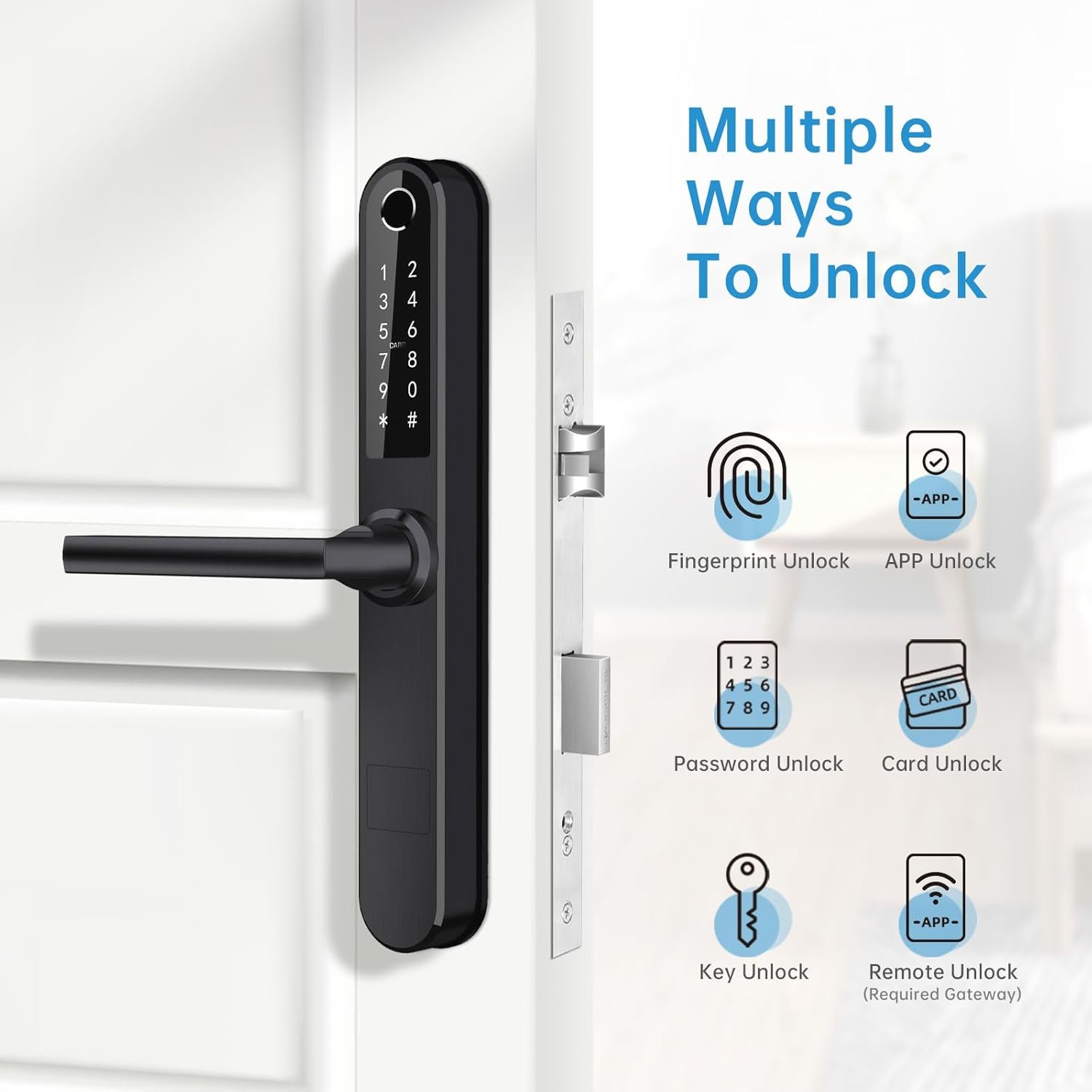
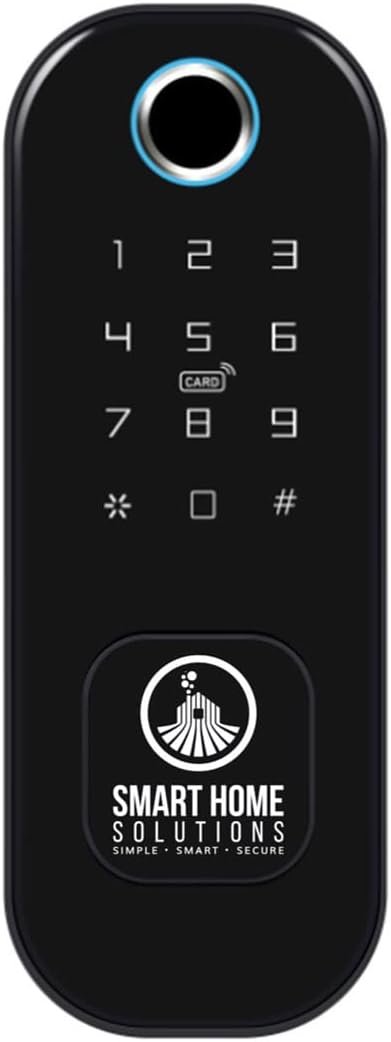
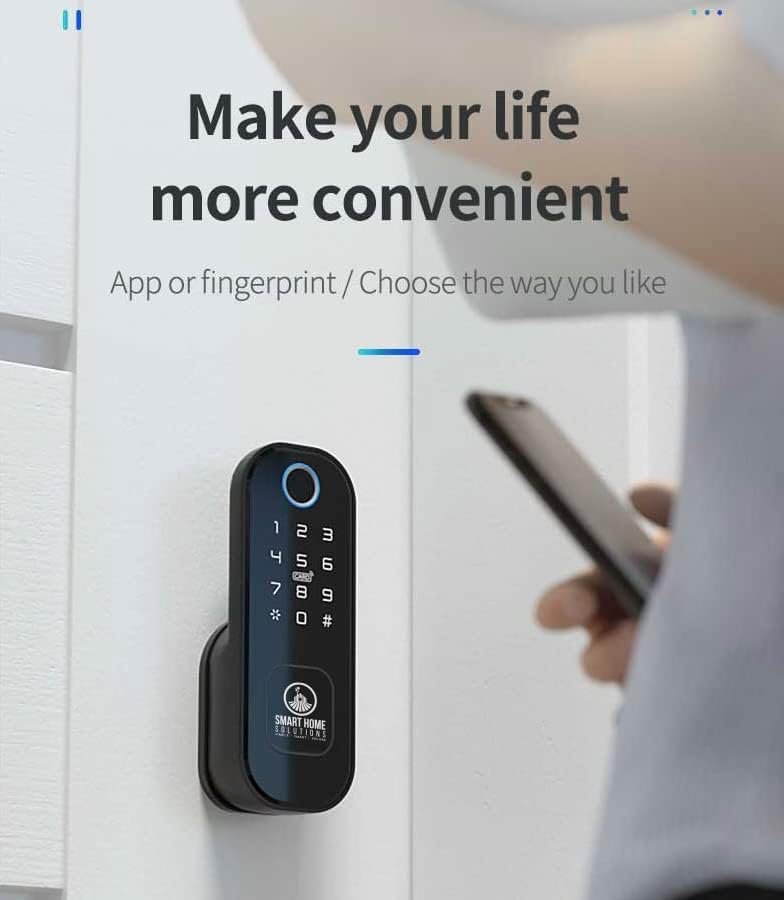
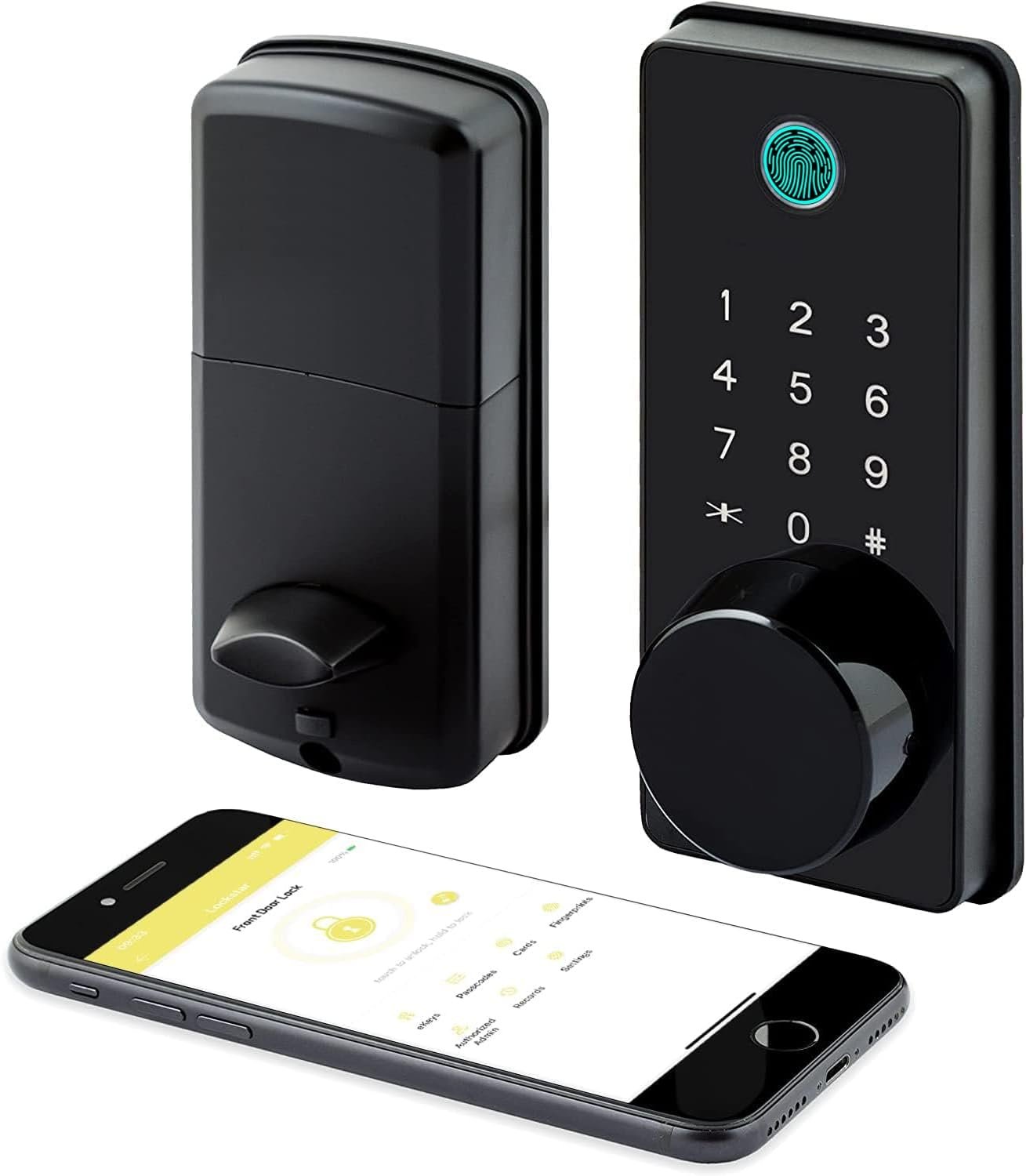
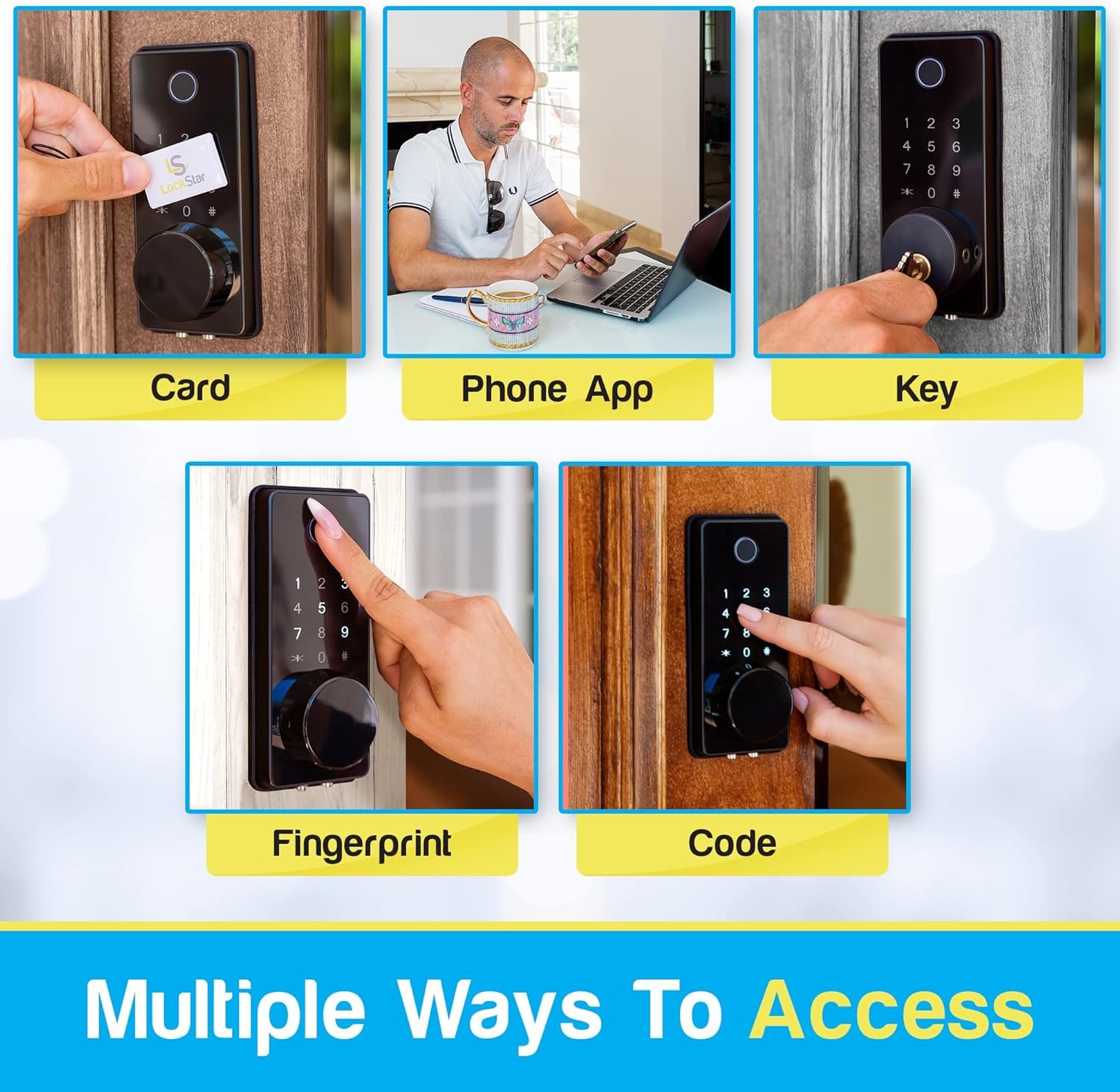
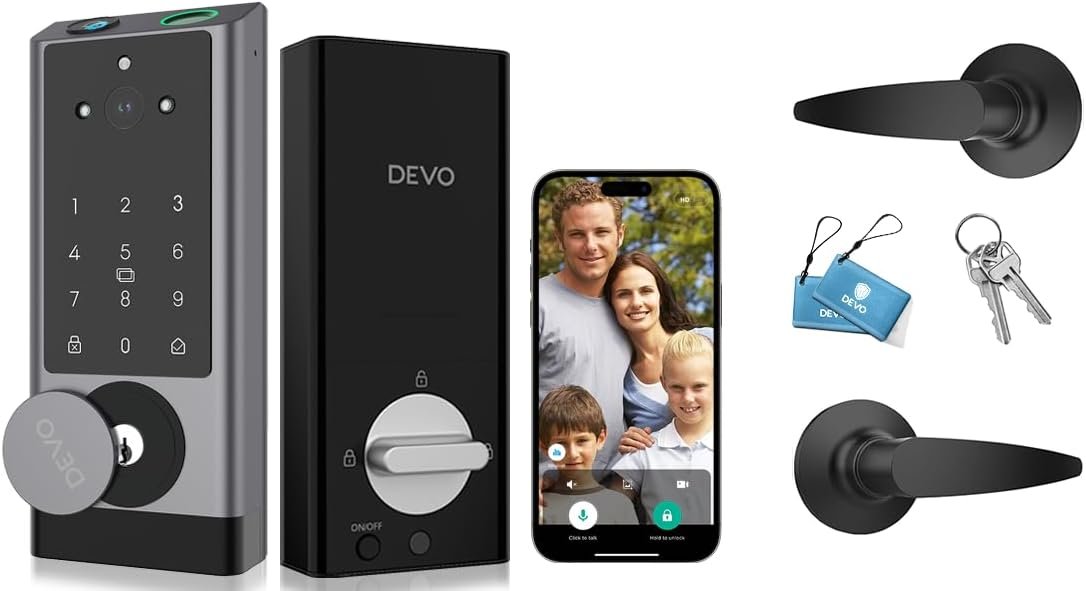
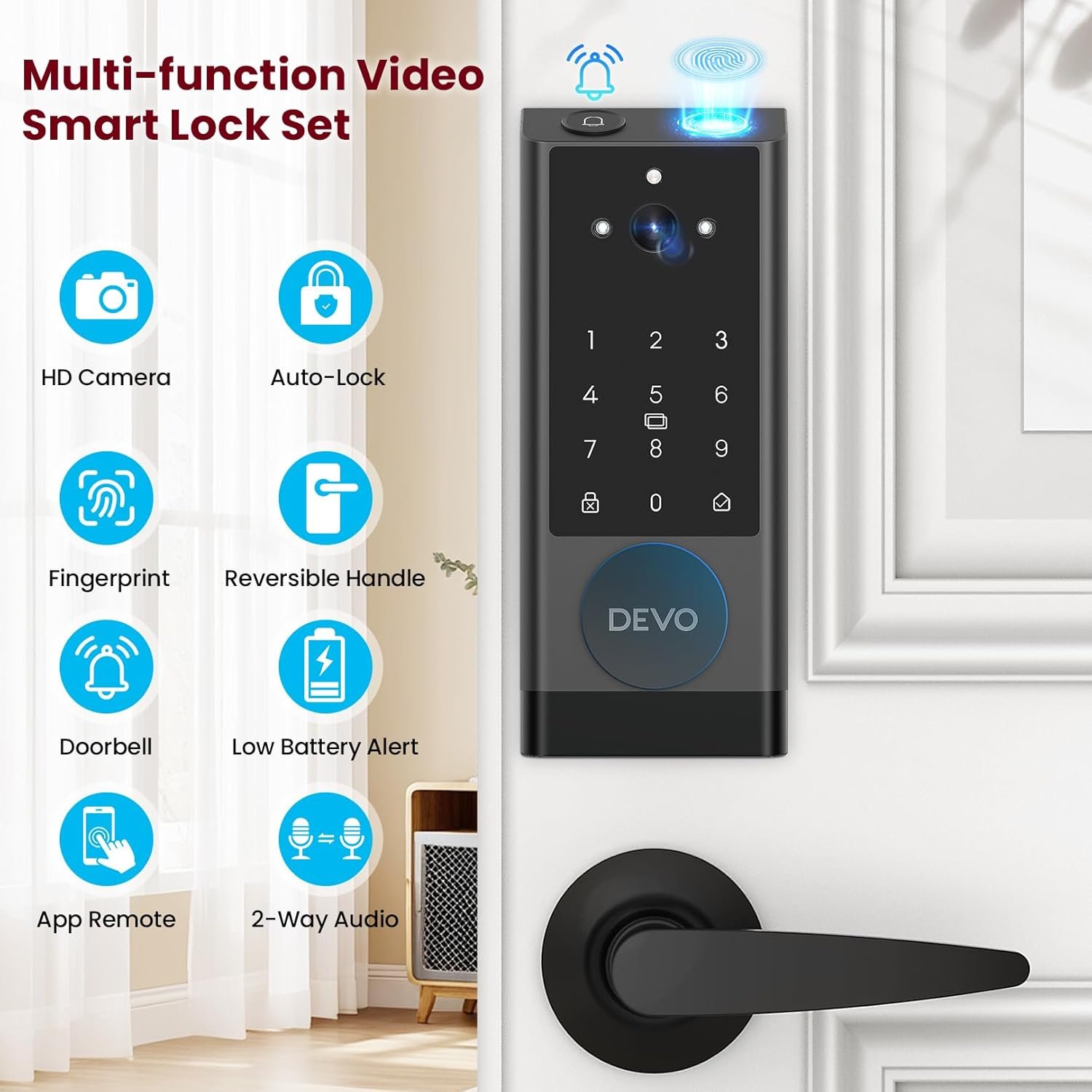
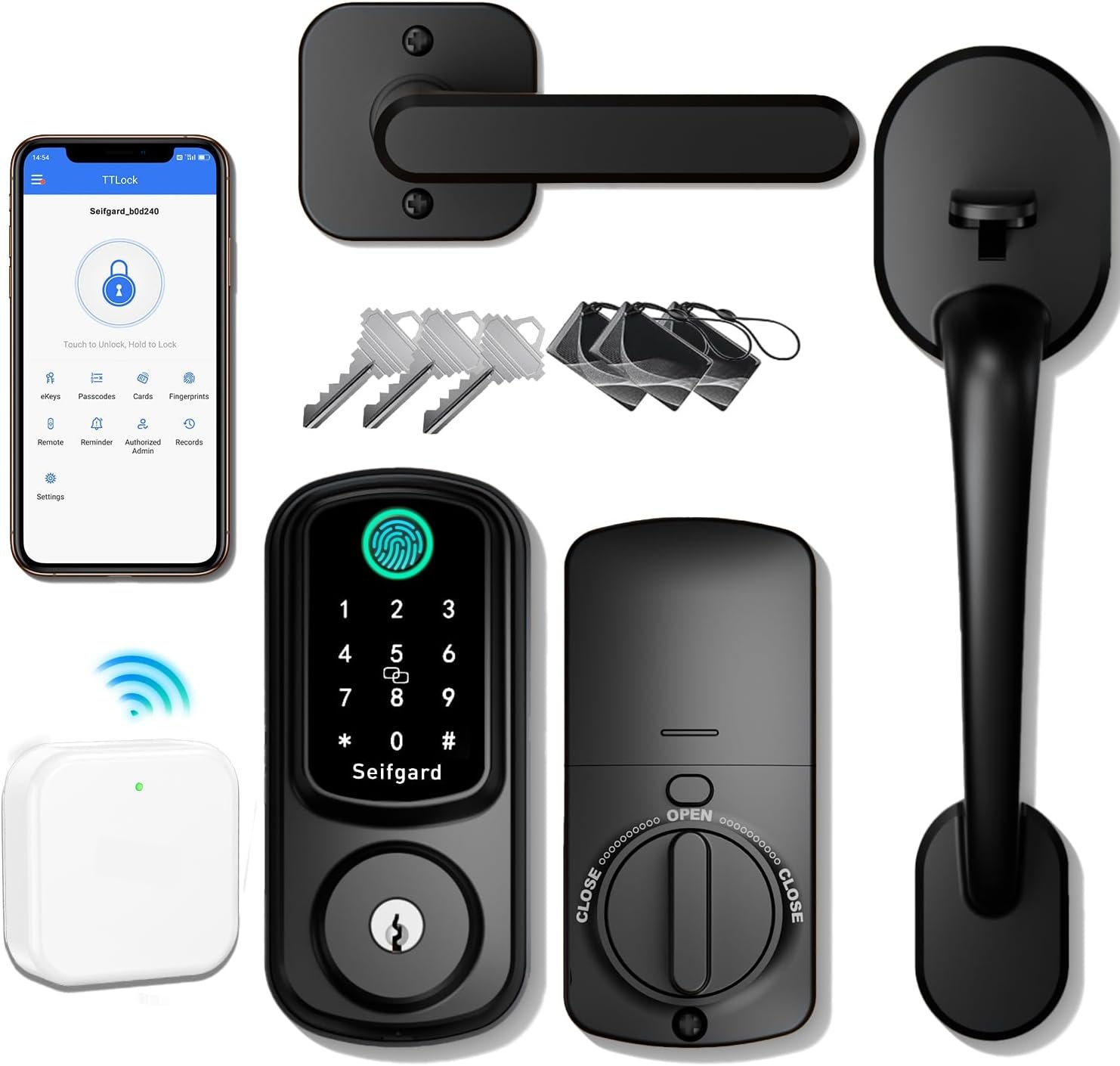
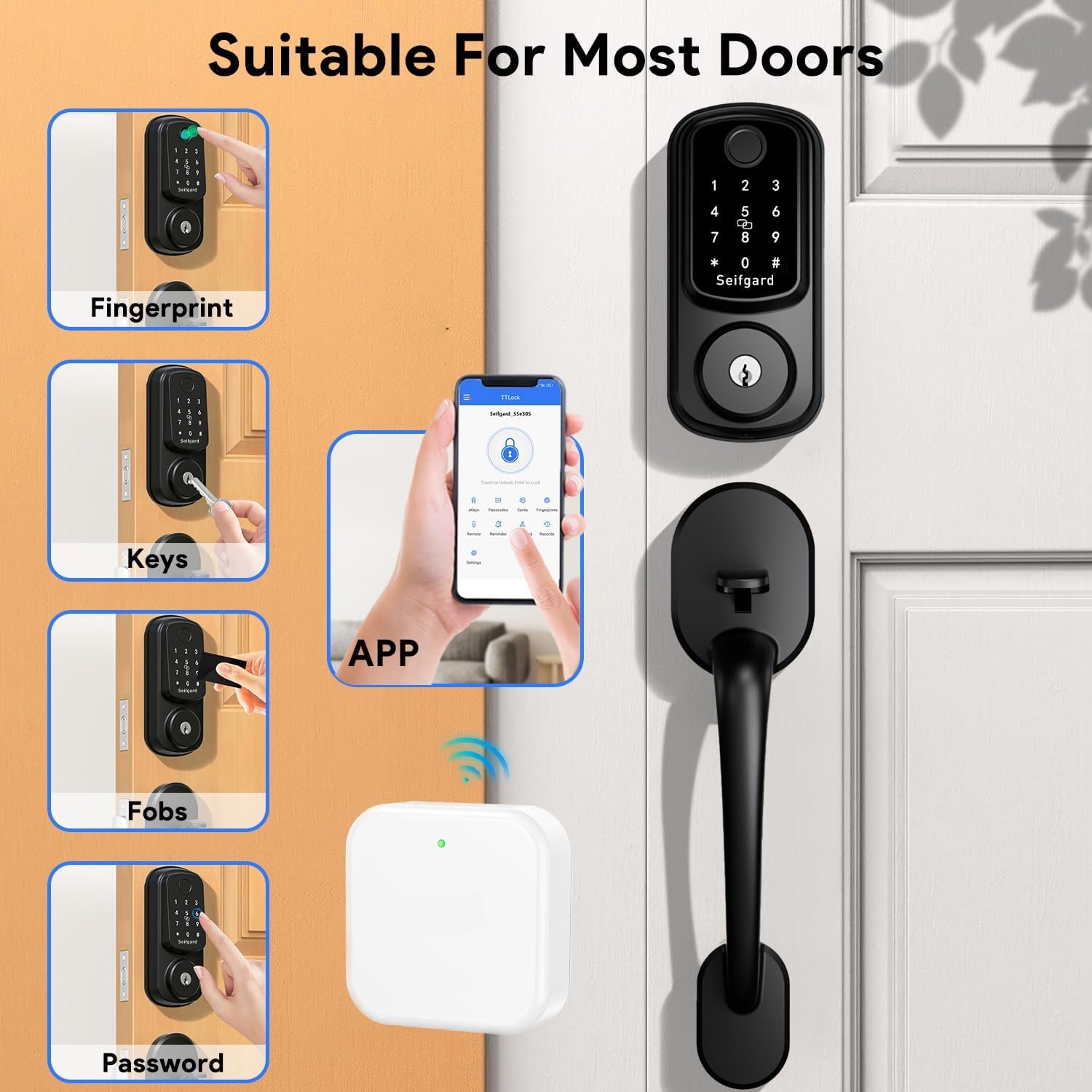
| Model | Access Methods | Multipoint Points | Connectivity | Battery Life | Rating | Price Range |
|---|---|---|---|---|---|---|
| Luston Slim | 7 methods | 3-5 hooks | Bluetooth/Wi-Fi | Rechargeable | 4.5★ | $299 |
| Biometric Intel | 4 methods | 2 hooks | Wi-Fi Direct | AA batteries | 5.0★ | $210 |
| Philips Wi-Fi | 4 methods | 3 hooks | Built-in Wi-Fi | AA batteries | 4.3★ | $159 |
| DEVO G1 | 6 methods | 2 points | Wi-Fi (Tuya) | Rechargeable | 4.1★ | $161 |
| Seifgard | 8 methods | 3 hooks | Zigbee/Wi-Fi | AA batteries | 4.6★ | $169 |
uPVC frames provide excellent insulation but may require reinforcement around lock mounting points. Composite doors offer the best combination of strength and weather resistance. Aluminum frames provide exceptional durability but may need specialized mounting hardware.
The backset distance from door edge to lock cylinder center typically ranges from 60mm to 70mm. Door thickness affects through-bolt length requirements and mortise pocket depth needed for the lock mechanism.
Systems range from two to five or more locking points. Quality of mechanisms and frame integration matters more than quantity alone.
Look for systems meeting ANSI/BHMA standards for residential hardware or European EN 12209 standards, indicating rigorous testing for durability, security, and weather resistance.
PIN keypads provide reliable access independent of smartphones. Fingerprint scanners offer unparalleled convenience but can be affected by weather conditions. Key fobs and smartphone apps provide flexibility for sharing access. Mechanical key backup remains essential for power failures.
The most secure systems require two or more identification forms before granting access, such as combining fingerprint recognition with PIN entry.
Some systems use standard AA batteries lasting six to twelve months, while others incorporate rechargeable lithium batteries needing charging every few months.
Wi-Fi provides direct internet connection, Bluetooth enables smartphone proximity unlocking, and proprietary hubs may require additional hardware but often provide more stable connections.
Look for IP65 or higher ratings indicating protection against dust infiltration and water from any direction.
Electronic components must accommodate your local climate extremes to maintain reliable operation.
Compatibility with Amazon Alexa, Google Assistant, Apple HomeKit, and IFTTT platforms enables voice control, automated routines, and integration with other smart devices.
Some locks retrofit existing multipoint preparations while others require complete mechanism replacement. Professional installation may be required to maintain warranty coverage.
Determine whether you need to replace existing multipoint gear or can install a complete new set.

Begin by measuring the backset distance from door edge to existing lock cylinder center, as this must match your new smart lock exactly. Measure door thickness to determine through-bolt length requirements and mortise pocket depth needed for electronic components.
Electronic actuators must align perfectly with existing hook and bolt pathways, or the system will bind or fail to engage properly. Test-fit all components before final installation and be prepared to make minor adjustments to existing mortise pockets.
Clamping systems offer easier installation but may not provide the same security integration as full mortise replacement. Full replacement provides optimal security but requires more extensive door modification.
Test every access method multiple times, ensure manual key override works when electronics are disabled, and confirm auto-lock timing functions properly. Pay attention to the relationship between electronic and mechanical components.
If your door requires significant modification, existing hardware doesn’t align with new system requirements, or you encounter unexpected complications, professional locksmith services often cost less than potential DIY damage.
Most systems provide low-battery alerts through smartphone apps, LED indicators, or audible warnings. Establish regular replacement schedules based on usage patterns and keep spare batteries available to avoid emergency lockouts.
Check door seals, gasket condition, and drainage pathways regularly to prevent water infiltration. Look for corrosion signs on metal components and address weather damage immediately.
Fingerprint systems benefit from periodic cleaning with appropriate electronics cleaners. Clean keypad surfaces regularly to maintain tactile response and prevent wear patterns that could compromise security.
Enable automatic update notifications when available and schedule regular manual checks for systems without automatic updating. Maintain documentation of firmware versions and update dates.
Keep contact information for manufacturer technical support, local locksmith services familiar with smart locks, and installation professionals. Maintain warranty documentation and user manuals in accessible locations.
Multipoint smart lock systems provide substantially enhanced security by distributing force across multiple contact points, making forced entry significantly more difficult. The security benefits extend to improved weather sealing, better door alignment, and enhanced structural integrity. For exterior doors, especially in high-crime areas, the additional security typically justifies the higher initial cost.
Common challenges include increased complexity leading to more potential failure points, higher initial costs, and more complex installation requirements. Maintenance involves multiple moving parts and electronic components. Some users experience difficulty with door alignment, as multipoint smart lock systems are less forgiving of door settling. Electronic components add battery maintenance and potential connectivity issues.
The market includes established manufacturers like Yale, Schlage, and Kwikset, though their smart multipoint smart lock offerings may be limited. Specialized brands like Luston, Seifgard, and DEVO focus specifically on smart multipoint technology. European manufacturers such as Mul-T-Lock and ASSA ABLOY offer premium systems with excellent security ratings.
PanoLock compatibility depends on door preparation specifications and communication protocols rather than brand partnerships. Most smart locks supporting standard multipoint preparations (70mm backset, standard mortise dimensions) can potentially work with PanoLock systems. Focus on locks supporting your preferred communication methods and verify mounting dimensions match existing hardware.
Multipoint smart lock represent a significant advancement in residential security, combining physical security advantages with smart home convenience. Each system examined offers distinct advantages for different security needs, budgets, and technological preferences.
Based on comprehensive analysis of features, performance, and value, two systems stand out as the best choices for most homeowners. The Luston Slim Smart Lock Front Door Mortise Lock emerges as the top premium choice, offering seven access methods, exceptional build quality, and wide compatibility that justifies its higher price point. The stainless steel construction and comprehensive access options make it an excellent long-term investment for quality-conscious buyers.
For budget-conscious buyers seeking outstanding value, the DEVO G1 Smart Lock with Handle Set provides the best balance of features and affordability. With six access methods, massive 10,000 mAh battery capacity, and complete handle set at a competitive price, it delivers advanced smart lock technology without premium pricing.
The security landscape continues evolving, but investing in quality multipoint smart lock systems provides both immediate protection and future-ready technology. Evaluate your current door security, measure compatibility requirements, and select the system matching your specific needs. Your family’s security and peace of mind justify the investment in proven multipoint smart lock technology.
For further insights on smart lock technology, consider exploring these related topics:
These resources provide additional context and further explanation of the technology behind smart locks, complementing the detailed guide on how to reset smart lock.
Lorem ipsum dolor sit amet, consectetur adipiscing elit. Ut elit tellus, luctus nec ullamcorper mattis, pulvinar dapibus leo.
Subscribe for expert insights, product recommendations, and the latest smart lock innovations delivered straight to your inbox.
SmartLock360 – Your Trusted Security Resource
Copyright © 2025. All rights reserved. The go-to source for smart locks.